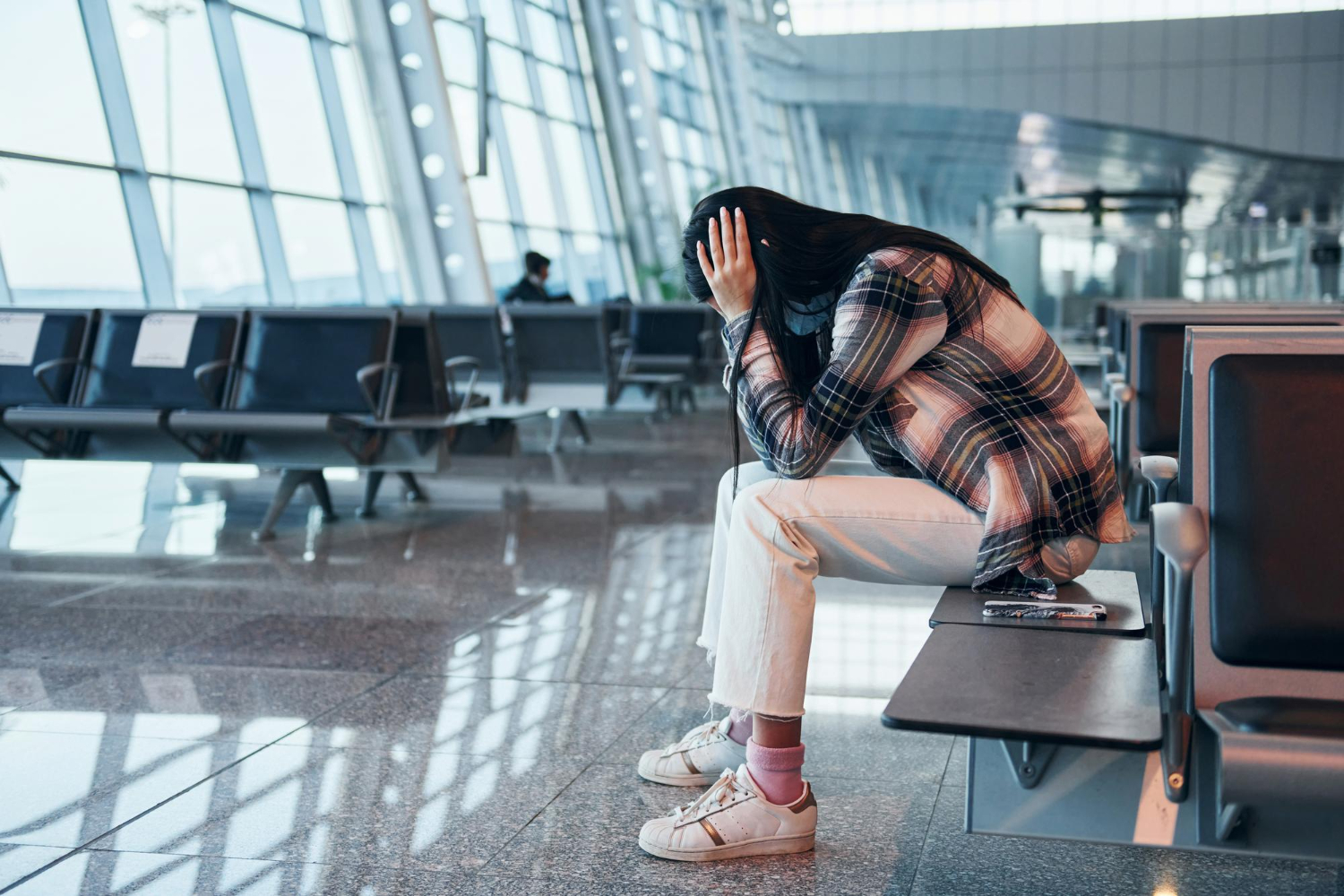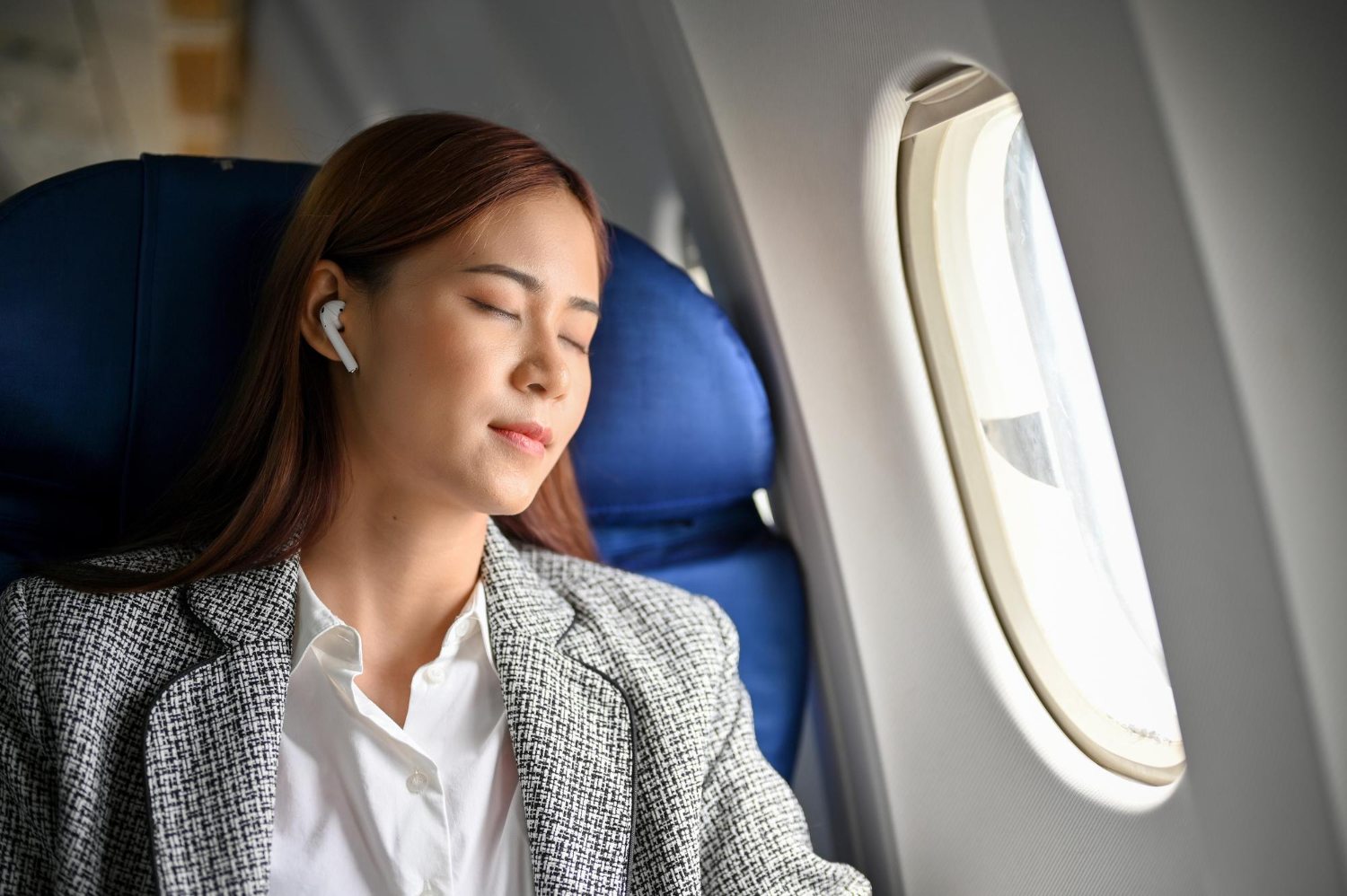Picture this: you’ve just stepped off a long-haul flight. You’re buzzing with excitement—new city, new adventures. But your body? It’s operating on a completely different schedule. Suddenly, it’s 3 AM, and you’re wide awake and wondering why your stomach thinks it’s time for lunch.
Jet lag—the traveler’s arch-nemesis—has arrived.
Enter melatonin. This tiny, unassuming hormone has become the go-to fix for sleep-deprived jet-setters. But does it actually work? And if so, are you using it the right way? We’ll cut through the noise and break down exactly how this sleeping aid affects jet lag—so you can hit the ground running, no matter where you land.
Why Jet Lag Happens: Your Body’s Clock vs. Reality
Jet lag isn’t just feeling a little out of sync. It’s a full-on biological tug-of-war between your body’s internal clock and the local time zone you’ve just landed in.

Here’s the deal: your body runs on circadian rhythms, which dictate when you feel awake, when you feel sleepy, and when you absolutely need that cup of coffee. These rhythms are primarily controlled by exposure to light and, you guessed it—melatonin.
But the second you hop across multiple time zones, your clock freaks out. It’s expecting daylight when there’s none or darkness when there shouldn’t be. Your brain is confused, your sleep schedule is wrecked, and no amount of caffeine or power naps seem to get you back on track.
So, what now?
Melatonin: The Sleep Cheat Code?
Melatonin isn’t just some random sleep aid—it’s a naturally occurring hormone produced by your pineal gland. Think of it as your body’s internal dimmer switch. As the sun sets and darkness creeps in, melatonin levels rise, signaling to your brain that it’s time to wind down.
But when you travel, especially eastward, your body’s melatonin production is thrown off. It either kicks in too early or too late, leaving you wide awake when you should be sleeping or dozing off at the worst possible times.

Here’s where melatonin supplements come into play. Unlike traditional sleeping pills that knock you out, melatonin tricks your body into adjusting its internal clock—if you take it correctly.
Nine of the ten trials found that melatonin, taken close to the target bedtime at the destination (10pm to midnight), decreased jet-lag from flights crossing five or more time zones (Melatonin for the prevention and treatment of jet lag – PubMed).
And that’s the real solution: timing and dosage are everything. Get it wrong, and you’ll end up feeling groggier, not better.
Does Melatonin Really Work for Jet Lag?
Short answer: YES, but only if you don’t mess it up.
Melatonin can be your answer to jet lag—if you use it right. Studies confirm it’s especially effective when flying east across five or more time zones. But take it at the wrong time, in the wrong dose, or without considering light exposure? You might just end up groggier than before.
All you need to do is get this right.
Timing Is Everything: How to Use Melatonin Like a Pro
Jet lag isn’t just about feeling tired—it’s your circadian rhythm throwing a tantrum. Melatonin helps reset the clock, but only if you take it strategically.
1. Eastward Travel (Gaining Hours)
Flying to Europe or Asia? Your body wants to sleep later, but you need to adjust earlier.
Take melatonin in the evening at your destination to nudge your sleep cycle forward. This tells your brain, “Hey, it’s bedtime now.”
Melatonin has been more effective at treating eastward jet lag, and so might be more helpful to you on the outbound trip—when taken close to the target bedtime (Melatonin for jet lag – Harvard Health).
2. Westward Travel (Losing Hours)
Westbound flights (think U.S. to Hawaii) usually hurt less, but that doesn’t mean you’re immune to jet lag.
If you’re struggling to fall asleep, take melatonin closer to bedtime to reinforce your natural rhythm.
3. Dosage: Less Is More
Dosing melatonin isn’t a “more is better” situation. Stick to 0.5 to 3 mg. Any higher and you risk waking up feeling like you got hit by a truck.
4. Consistency Matters
Melatonin isn’t magic—it works best with a little prep time. Start one to two nights before travel and continue for a few nights after arrival.

Beyond Supplements: Optimizing Your Light Exposure
Melatonin is powerful, but light exposure is the real MVP of circadian rhythm control. Your body’s internal clock is wired to sunlight, so manipulating light exposure can supercharge melatonin’s effects.
| Light Exposure | What You Should Do |
|---|---|
| Morning Light | Flying east? Your body needs to wake up earlier. Get bright morning light ASAP upon arrival. Sunlight signals your brain to shift your clock forward. |
| Evening Light | Flying west? You need to stay up later. Avoid morning light and seek evening light to help delay your body clock. |
Want a personalized game plan? Apps like TimeShifter can map out an optimized light schedule based on your specific flight itinerary.
Common Mistakes to Avoid
Taking Melatonin at the Wrong Time
Melatonin during the day? Bad move. Your body’s internal clock doesn’t appreciate the mixed signals. Taking melatonin when the sun’s still up can actually backfire.
This can worsen your jet lag, throw off your circadian rhythm, and leave you groggy when you need to be alert.
Thinking More is Better
A double dose won’t knock you out faster. In fact, overdoing melatonin can lead to headaches, dizziness, and a whole lot of regret.
Too much melatonin can have the opposite effect of its intended purpose. It can make it harder to sleep because your circadian rhythms may get disrupted. “Too much” in this context may vary depending on your size and needs (Is It Possible to Overdose on Melatonin? Here’s What to Know – Healthline).
Stick to the recommended amount. Anything extra isn’t just unnecessary—it’s counterproductive.
Ignoring Light Exposure
Melatonin alone won’t save you if you’re blasting your eyes with bright screens at night. Your body needs cues. Get outside for morning sunlight to help reset your clock, and avoid artificial light (yes, that means scrolling TikTok in bed is a no-go).
FAQs
Can I take melatonin on the plane?
Yes—but only if it’s close to evening time at your destination. The goal is to sync up with your new time zone, not just conk out mid-flight.
How long does melatonin take to kick in?
Usually 30 minutes to an hour. Take it before you need to sleep, not when you’re already tossing and turning.
Is melatonin safe for kids?
Maybe. Check with a pediatrician first. Kids’ sleep cycles are different from adults, and melatonin isn’t a one-size-fits-all solution.
Can I drink alcohol with melatonin?
Not a good idea. Alcohol messes with melatonin’s effectiveness and can make side effects (like grogginess) even worse.
Does melatonin work for all types of jet lag?
It’s most effective when traveling east but can also help westward travelers when timed correctly.
Are there natural ways to increase melatonin?
Absolutely. Dim the lights at night, avoid blue light from screens, and keep your sleeping space dark. Your body will thank you.
What if I wake up in the middle of the night?
Resist the urge to pop another melatonin. Instead, try relaxation techniques—deep breathing, meditation, or even progressive muscle relaxation. It’s better than disrupting your sleep cycle.

Travel Smarter, Sleep Better
Melatonin isn’t a magic cure for jet lag, but it can be reliable when you use it correctly. The real solution? Combining it with the right habits—light management, hydration, and relaxation techniques. Get those right, and you’ll land feeling fresh, not foggy.
Where to buy Melatonin
Here are the most reliable and trusted sites where you can purchase Melatonin (Sleepy Owl):
| HealthyRXs | ✅ Discounted prices ✅ Free shipping on orders over $200 |
Visit |

